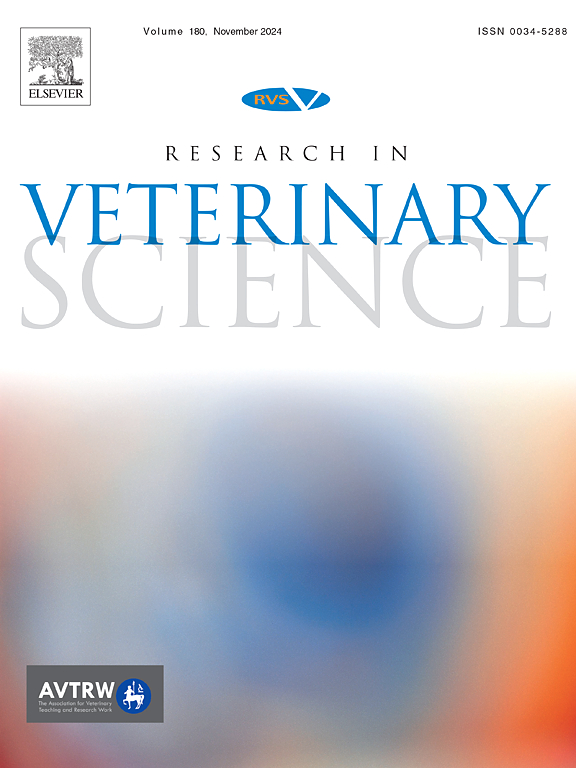Assessment of the lysis efficiency of selected guanidinium thiocyanate/hydrochloride lysis buffers commonly used in PCR diagnostics
IF 2.2
3区 农林科学
Q1 VETERINARY SCIENCES
引用次数: 0
Abstract
In this study, the virucidal activities of Qiagen Buffer AL, Qiagen Buffer AVL and Roche MPLB (MagNA Pure lysis/binding) buffer, each containing a guanidine-based denaturing agent, were assessed against selected pathogenic animal (canine adenovirus type 2 (CAV-2), 6.0 log10 TCID50/mL and canine coronavirus (CCoV), 3.9 log10 TCID50/mL) and human (hepatitis A virus (HAV), 6.7 log10 TCID50/mL) viruses at different temperatures and over different times. In the virus inactivation experiments, all three lysis buffers were able to inactivate CAV-2 and CCoV even in a short 1-min contact time. Although the HAV titre was reduced by at least 4.5 log10, it was still observed to have residual infectivity. Only the AL lysis buffer in conjunction with heat treatment appeared to be highly efficient at HAV inactivation. A complete (99.99 %) inactivation of CAV-2 (6.0 log10 TCID50/mL) and CCoV (4.7 log10 TCID50/mL) by the MPLB buffer was also observed even at lower-than-recommended buffer concentrations. Generally, all lysis buffers were effective in the inactivation of enveloped and non-enveloped animal viruses. However, they reduced HAV infectivity to a lesser extent, indicating a need for a more stringent inactivation method to destroy infectivity of this virus in diagnostic material.
求助全文
约1分钟内获得全文
求助全文
来源期刊

Research in veterinary science
农林科学-兽医学
CiteScore
4.40
自引率
4.20%
发文量
312
审稿时长
75 days
期刊介绍:
Research in Veterinary Science is an International multi-disciplinary journal publishing original articles, reviews and short communications of a high scientific and ethical standard in all aspects of veterinary and biomedical research.
The primary aim of the journal is to inform veterinary and biomedical scientists of significant advances in veterinary and related research through prompt publication and dissemination. Secondly, the journal aims to provide a general multi-disciplinary forum for discussion and debate of news and issues concerning veterinary science. Thirdly, to promote the dissemination of knowledge to a broader range of professions, globally.
High quality papers on all species of animals are considered, particularly those considered to be of high scientific importance and originality, and with interdisciplinary interest. The journal encourages papers providing results that have clear implications for understanding disease pathogenesis and for the development of control measures or treatments, as well as those dealing with a comparative biomedical approach, which represents a substantial improvement to animal and human health.
Studies without a robust scientific hypothesis or that are preliminary, or of weak originality, as well as negative results, are not appropriate for the journal. Furthermore, observational approaches, case studies or field reports lacking an advancement in general knowledge do not fall within the scope of the journal.
 求助内容:
求助内容: 应助结果提醒方式:
应助结果提醒方式:


